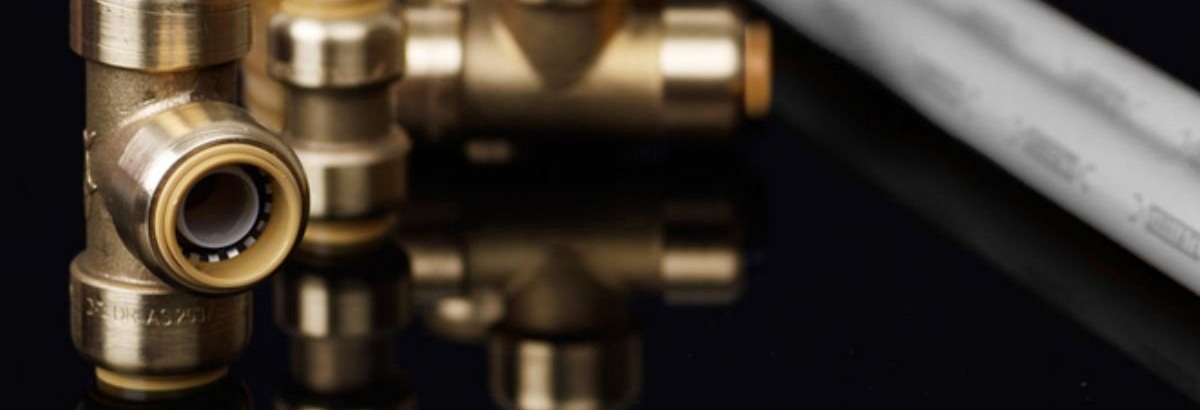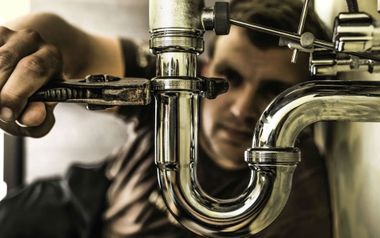The publisher is making a few great points regarding Understanding Your Home's Plumbing Anatomy in general in the article just below.

Comprehending how your home's pipes system works is essential for every home owner. From supplying tidy water for drinking, food preparation, and bathing to securely eliminating wastewater, a well-maintained pipes system is crucial for your family members's wellness and convenience. In this extensive overview, we'll discover the complex network that comprises your home's pipes and deal ideas on maintenance, upgrades, and managing common problems.
Introduction
Your home's plumbing system is greater than just a network of pipelines; it's an intricate system that guarantees you have access to clean water and efficient wastewater elimination. Recognizing its components and exactly how they interact can aid you avoid costly repair work and make sure every little thing runs efficiently.
Fundamental Parts of a Pipes System
Pipelines and Tubes
At the heart of your pipes system are the pipelines and tubes that lug water throughout your home. These can be constructed from various materials such as copper, PVC, or PEX, each with its advantages in regards to longevity and cost-effectiveness.
Components: Sinks, Toilets, Showers, and so on.
Fixtures like sinks, commodes, showers, and bathtubs are where water is used in your home. Comprehending exactly how these fixtures attach to the pipes system assists in diagnosing problems and preparing upgrades.
Valves and Shut-off Points
Valves control the flow of water in your pipes system. Shut-off valves are crucial throughout emergency situations or when you require to make fixings, enabling you to separate parts of the system without disrupting water flow to the entire home.
Water System System
Main Water Line
The primary water line links your home to the community water supply or a private well. It's where water enters your home and is distributed to different components.
Water Meter and Stress Regulatory Authority
The water meter actions your water use, while a pressure regulator makes certain that water moves at a risk-free stress throughout your home's pipes system, stopping damages to pipelines and components.
Cold Water vs. Hot Water Lines
Recognizing the difference in between cold water lines, which supply water directly from the primary, and hot water lines, which carry warmed water from the hot water heater, helps in troubleshooting and preparing for upgrades.
Drain System
Drain Pipes Pipeline and Traps
Drain pipes lug wastewater away from sinks, showers, and toilets to the sewer or sewage-disposal tank. Catches prevent drain gases from entering your home and also catch debris that can trigger blockages.
Ventilation Pipelines
Air flow pipes allow air into the water drainage system, stopping suction that could slow water drainage and cause traps to vacant. Appropriate ventilation is vital for preserving the honesty of your plumbing system.
Relevance of Appropriate Drainage
Guaranteeing proper drain protects against backups and water damages. Frequently cleansing drains and maintaining catches can prevent expensive repairs and prolong the life of your pipes system.
Water Heater
Types of Water Heaters
Hot water heater can be tankless or standard tank-style. Tankless heating systems heat water on demand, while containers save heated water for instant usage.
Updating Your Plumbing System
Reasons for Upgrading
Updating to water-efficient components or replacing old pipelines can improve water high quality, reduce water costs, and raise the value of your home.
Modern Plumbing Technologies and Their Advantages
Explore innovations like smart leak detectors, water-saving toilets, and energy-efficient water heaters that can conserve cash and reduce ecological impact.
Cost Factors To Consider and ROI
Calculate the ahead of time expenses versus lasting cost savings when taking into consideration plumbing upgrades. Lots of upgrades spend for themselves via minimized utility costs and fewer repair services.
How Water Heaters Link to the Plumbing System
Recognizing how water heaters attach to both the cold water supply and hot water distribution lines aids in identifying problems like not enough warm water or leaks.
Maintenance Tips for Water Heaters
On a regular basis purging your hot water heater to get rid of sediment, inspecting the temperature level settings, and checking for leaks can prolong its lifespan and improve power performance.
Usual Pipes Issues
Leaks and Their Reasons
Leakages can happen as a result of maturing pipelines, loosened installations, or high water stress. Addressing leaks without delay avoids water damage and mold and mildew development.
Blockages and Obstructions
Clogs in drains pipes and commodes are usually brought on by purging non-flushable products or a build-up of oil and hair. Utilizing drain displays and bearing in mind what decreases your drains pipes can prevent clogs.
Signs of Pipes Troubles to Expect
Low tide pressure, slow-moving drains pipes, foul odors, or uncommonly high water expenses are signs of prospective pipes problems that must be attended to immediately.
Plumbing Upkeep Tips
Routine Evaluations and Checks
Schedule yearly plumbing examinations to capture issues early. Try to find indications of leakages, rust, or mineral build-up in faucets and showerheads.
DIY Maintenance Tasks
Simple jobs like cleaning faucet aerators, checking for toilet leaks using color tablet computers, or protecting exposed pipes in cold environments can stop significant pipes issues.
When to Call a Professional Plumbing Professional
Know when a plumbing issue requires specialist know-how. Trying intricate fixings without appropriate knowledge can cause more damages and higher fixing expenses.
Tips for Lowering Water Use
Easy behaviors like taking care of leaks immediately, taking much shorter showers, and running complete tons of washing and dishes can preserve water and reduced your energy expenses.
Eco-Friendly Pipes Options
Consider lasting pipes products like bamboo for flooring, which is durable and eco-friendly, or recycled glass for countertops.
Emergency situation Preparedness
Steps to Take Throughout a Pipes Emergency
Know where your shut-off shutoffs are located and exactly how to turn off the water in case of a burst pipeline or major leakage.
Value of Having Emergency Situation Get In Touches With Handy
Maintain contact info for local plumbers or emergency services conveniently available for fast feedback throughout a plumbing dilemma.
Ecological Influence and Preservation
Water-Saving Fixtures and Appliances
Installing low-flow faucets, showerheads, and toilets can considerably lower water use without giving up efficiency.
Do It Yourself Emergency Situation Fixes (When Applicable).
Short-lived solutions like using air duct tape to spot a leaking pipe or placing a container under a trickling tap can reduce damage until a professional plumbing professional shows up.
Verdict.
Comprehending the makeup of your home's pipes system empowers you to keep it effectively, saving money and time on fixings. By complying with routine maintenance regimens and staying notified concerning modern pipes modern technologies, you can guarantee your plumbing system runs effectively for many years to find.
Exploring Your Homes Plumbing Anatomy
Water Supply System
Main Water Line: This is where water enters your home from the municipal supply or a private well. Water Meter: Typically located near where the main water line enters the property, it measures the amount of water used. Shutoff Valve: It s crucial to know where this is in case of emergencies. It allows you to turn off the water supply to the entire house. Pipes and Fittings: These distribute water throughout your home. Materials can include copper, PVC, or PEX. Drain-Waste-Vent (DWV) System
Drains: Located in sinks, showers, and tubs, these carry wastewater away. Traps: U-shaped pipes under sinks that hold standing water, blocking sewer gases from entering the home. Vents: Pipes that lead from the DWV system to the outside, preventing vacuum formation and allowing gases to escape. Sewer Line: Carries all wastewater from the home to the municipal sewer system or a septic tank. Fixtures and Appliances
Sinks, Toilets, and Showers Dishwashers and Washing Machines Water Heaters Maintenance Tips
Regularly check for leaks in exposed pipes and around fixtures. Inspect the water heater annually for signs of wear. Clean drains and traps to prevent clogs and odors. Know how to shut off water to individual fixtures. When to Call a Professional
Major leaks or burst pipes Installation of new pipes or fixtures Septic tank issues Remodeling projects that involve plumbing changes Conclusion
Understanding the anatomy of your home's plumbing is key to maintaining a functional and efficient system. Regular checks and knowing when to call in the experts can save you time, money, and stress.
https://www.mavyn.com/blog/exploring-your-homes-plumbing-anatomy

I was guided to that report on Plumbing Installation 101: All You Need to Know through a friend on a different web address. Do you know another person who is involved in the topic? Why not promote it. Thanks so much for going through it.
Request An Appointment